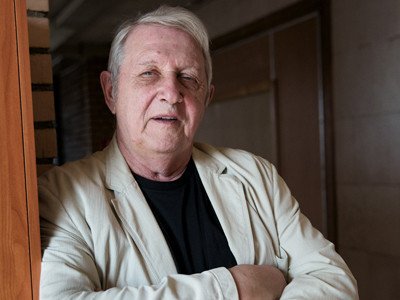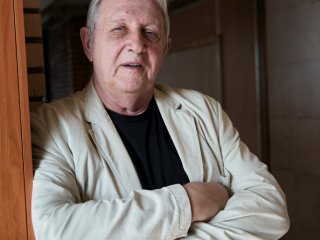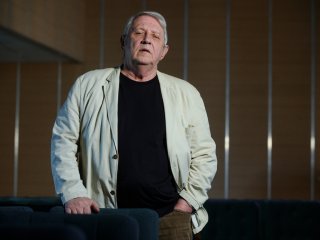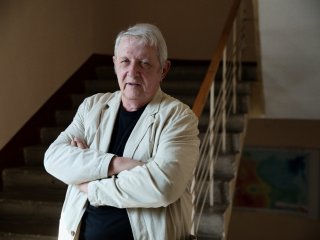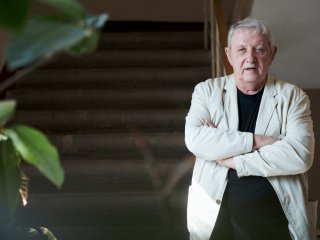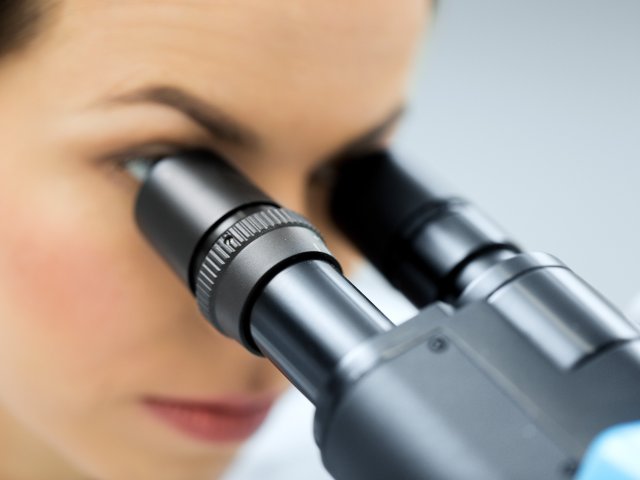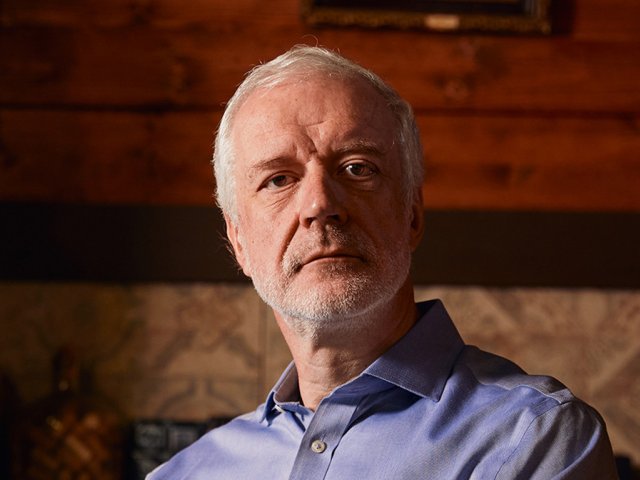35 years ago, Chernobyl catastrophe broke out. How did it happen, and what lessons did we learn from it? The answers to these questions are provided by A.V. Rubanovich, head of ecological genetics laboratory, chief of genetic security department at the Vavilov Institute of General Genetics (VIGG), professor at the Moscow Institute of Physics and Technology (MIPT).
– Chernobyl catastrophe broke out 35 years ago, on April 26, 1986. Did you work at this institute at that time?
– Yes. I came here in 1973. Thus, I have been working at the institute for 47 years. My career began at the laboratory of radiation genetics. I hoped for taking part in many trips and expeditions. Being a youth, I was crazy about traveling.
– Your dream came true in general. There were expeditions, weren’t there?
– ТYes, it worked out in this way. It was the laboratory of the late Vladimir Shevchenko. Over the next 20 years, we would visit different flashpoint areas of the country. Apart from Chernobyl catastrophe, there was Kyshtym one, the so-called EURT (East-Urals Radiation Trace). Every year we would go and work there.
Later, when Chernobyl accident broke out, we switched over to this catastrophe. The accident broke out on April 26, while we arrived at the site as early as on May 15. Our flying squad came by the expedition vehicle and worked there for several years. We settled in the premises at the building of Chernobyl-based hospital which were allocated bringing our equipment with us. Our group worked in Chernobyl until 1990, when the collapse of the USSR began.
– What did you discover there? What conclusions did you come to?
– The first impression was overwhelming, as the environment was exposed to very high doses of radiation. The famous Yellow Forest was an amazing sight indeed. Besides, we immediately paid attention to endless morphosis of plants. It is different from mutation. Being exposed to high irradiation doses, certain development disorders occur in plants which do not die, but assume improbable forms. I have taken photos with me. Pine-trees looked like sequoias. I also remember plantain – the lush plantain everybody knows, yet with flat stalk. Being exposed to these gigantic doses, the majority of plant species acquired development disorders. Next year, all of them vanished, and the plants looked more or less like themselves again.
– What happened to people including you? You were also running high risk, weren’t you?
– As for danger, one could argue with it. I uphold the views that by far not all of my colleagues share. You know, I am a sort of dissident, nonconformist with regards to this issue. In my opinion, the degree of radiation hazard was grossly exaggerated. It was quite clear – invisible terrible death which everybody is scared of. However, it was not that terrible if compared to other disasters attacking the mankind. I mean technological accidents, not epidemics.
– Can you quote an example?
– I can recall, for instance, the accident that broke out at Bhopal-based plant producing pesticides in India. The emissions amounted to 30 tons of phosgene. 35,000 people died at the scene, 25,000 people went blind, while 200,000 more were paralyzed. Incredible number of victims, incomparable with the toll of Chernobyl catastrophe.
– Do you think that radiation cannot inflict such damages?
– It certainly cannot. Chernobyl catastrophe was a great tragedy, and I feel sorry for those who tried to combat the disaster. They, especially firemen, were true heroes. In Chernobyl, two people were killed due to the explosion, while 28 firefighters died later. They were exposed to such gigantic irradiation doses, that their survival was out of question. They were brought to Moscow, to the Biophysics Institute of the Federal Medico-Biological Agency, and friends told me that the patients on the upper and lower floors were settled out, as radiation would cut its way through concrete layers. Radiation disease was diagnosed in 109 patients. Only 109 cases of radiation disease were registered, though half a million people took part in eliminating the consequences of Chernobyl catastrophe. Irradiation disease develops in those who have been exposed to the dose equal to 1Gy (Gray) minimum.
Irradiation disease is a nasty affair. The symptoms look like the ones of influenza, as the immunity is compromised. However, this disease can be cured, and patients recover. Exposure to 1-2Gy is considered a mild form of disease, those exposed to 3-4Gy mostly die without treatment. If the dose is equal to 5-6Gy, treatment becomes useless.
– What happened to those who were not diagnosed as radiation disease patients?
– I worked with helicopter pilots and radiological safety officers. They were exposed to 0.5 or even 0.25Gy. It is not the dose that causes irradiation disease. While making a cytogenetic test and counting chromosomal breakages, one can discover: okay, this man was exposed to 0.2Gy minimum. It is equal to about 20 Roentgen. When a person is exposed to 0.5Gy, the blood formula will show that he/she has been irradiated, yet is far away from irradiation disease. There are no consequences as a rule in this case. That is why very many of those who mitigated the accident and local residents were exposed to radiation, yet did not catch irradiation disease. A frequently asked question is, “Okay, people being exposed would get increased number of aberrations in blood cells, lymphocytes. What about it? May it lead to after-effects, like tumors or leucosis?”
– Yes, it is an important question. Did you keep a watch on their further life? Can we say that there are more oncological patients among them if compared to people not exposed to radiation?
– There is no statistically significant data. Though publications saying about increase in number of oncological cases come out from time to time, no growth in incidence has been discovered following the results of Chernobyl catastrophe. In general, there have been only two cases of bulk irradiation with growth in cancer incidence as consequence. Moreover, only one type of cancer was registered in both cases – blood cancer.
Both of them are prototypical ones – Hiroshima and Nagasaki. I have worked in Nagasaki for two years and know the situation from inside. There were hundreds of thousands of irradiation disease patients there. They were examined, while the health of their offspring was monitored. Only one significant effect was discovered: 1Gy adds two cases per 1,000 patients to ordinary leucosis level, i.e. while the probability of dying due to leucosis amounts to 1/1000, exposure to 1Gy adds two additional cases. Afterwards, this conclusion proved true.
The second incident occurred in the USSR. Due to an accident, plutonium production wastes got into the river of Techa. It happened in 1950. The residents of all Tatar villages located along the river were exposed to excessive doses of radiation. About 100,000 people were exposed to 0.5Gy and more.
In 1970s-1980s the scientists started summing up the results and found 37 additional leucosis cases. The figures were exactly equal to the ones obtained in Hiroshima – 1Gy ads two additional leucosis cases per 1,000 people exposed.
– It looks not that many nationwide, but is a tragedy from the point of view of patient and his/her family.
– It becomes a tragedy, when irradiation disease follows. Actually, those who mitigated the consequences of Chernobyl and local residents escaped almost unharmed, no matter what media reported about cancer and mutations. No handicaps, mutations or natural abortions were found in the children of those exposed.
– Does it mean that we should not be scared of such accidents?
– We should and must do everything possible to avoid them. Yet, the very attitude to radiation must be changed.
– It is because radiation is natural background, and life is impossible without it.
– Sure. Each of us gets 0.001GY annually. It is cosmic radio noise. Moreover, there are densely populated areas in Iran, India and Brazil where the respective figure is by 100 and even 1,000 times higher. Local residents do not even pay attention to it.
As for Chernobyl, I have vivid memory of that time. I had never been so interested before. It was a very special atmosphere, do you know? I could enter any office having kicked the door open and demand everything I wanted. All my demands were met. People who were brought there liked and supported each other. All hell was let loose in hostels at night. It was an amazing experience, complete solidarity which is probably observed during the war.
After having worked there for several years, the people would come back and lose themselves into drinking in 1990s. They got accustomed to the drive and sense of purpose experienced in Chernobyl and suddenly felt being useless. Thus, they would die of vodka in 1990s.
– But you did not die… What kept you from drinking?
– I do not know. The habit of driving a car perhaps.
– What lessons should we draw from Chernobyl now?
– There is no alternative to nuclear energy anyway. No element can boast of such energy concentration. I do not know what form nuclear industry will assume, but it is clear that physicists ought to explore the safety issue more thoroughly. It is the main conclusion.
– Here is the question to you, as the specialist in radiation security. Today we often have computer tomography done, especially due to COVID epidemic. I have heard physicians saying that it is not safe. What do you think about it?
– There are accurate estimates with regards to the dose one is exposed to. Open Wikipedia and look what hazards or risks this dose results in. Having converted these doses into Gy, you will see there are no hazards. However, I would like to emphasize once again that the range of opinions is very wide even among professionals. At the same time, I am sure that radio-phobia is flourishing, which is not good.
– Do you mean that radiation is not the thing we should be scared of? What should we be scared of then?
– Toxic substances and pollution. Technological and technogenic pollution naturally inflicts real damage. People destroy nature with their own hands often not knowing that they are cutting the branch they are sitting on. Today, Chernobyl area is flourishing. Local forests are full of animals – deer, wolves, boars.
– Is it because the man has gone?
– Yes, it is. Having visited Urals to study EURT for the first time in 1973, I was amazed by the contrast between the Southern Urals in general and this island of contamination. I saw so many animals and birds there. Fish was in abundance in water basins with nu 4 times excessive radiation level. It means that the man, not radiation is the key enemy of nature. So, if you want to live, be on friendly terms with nature instead of destroying it.
